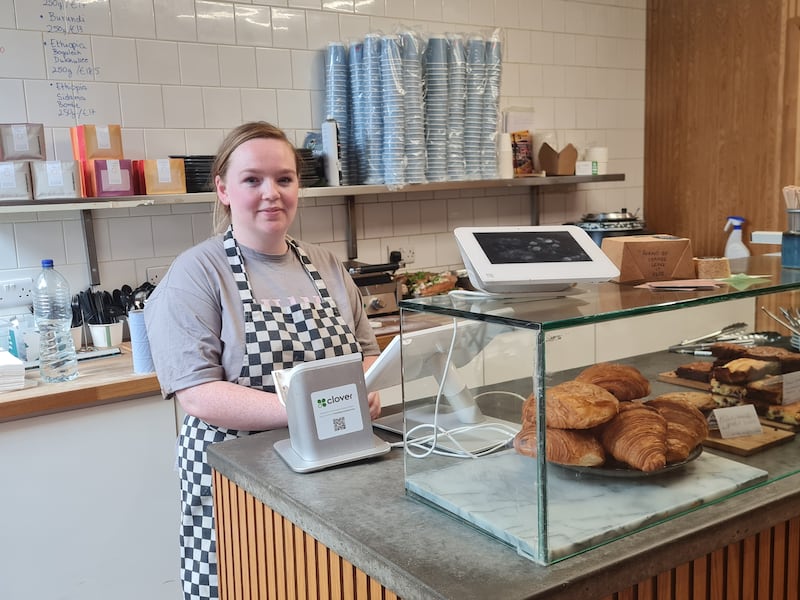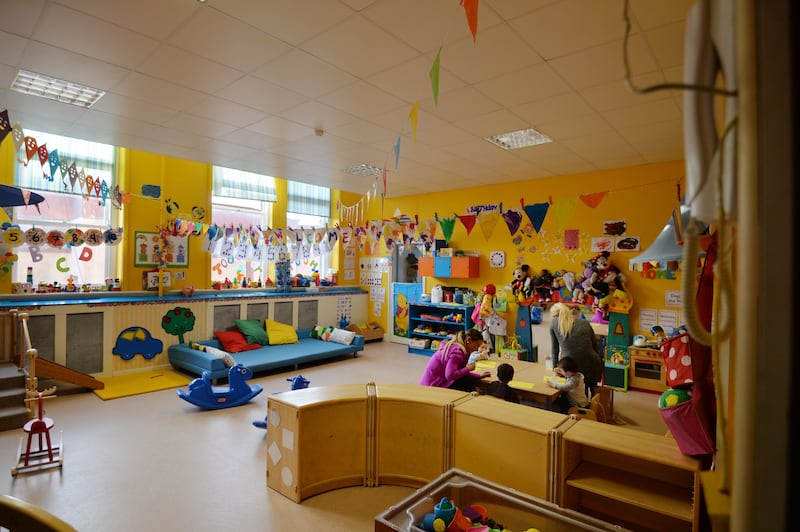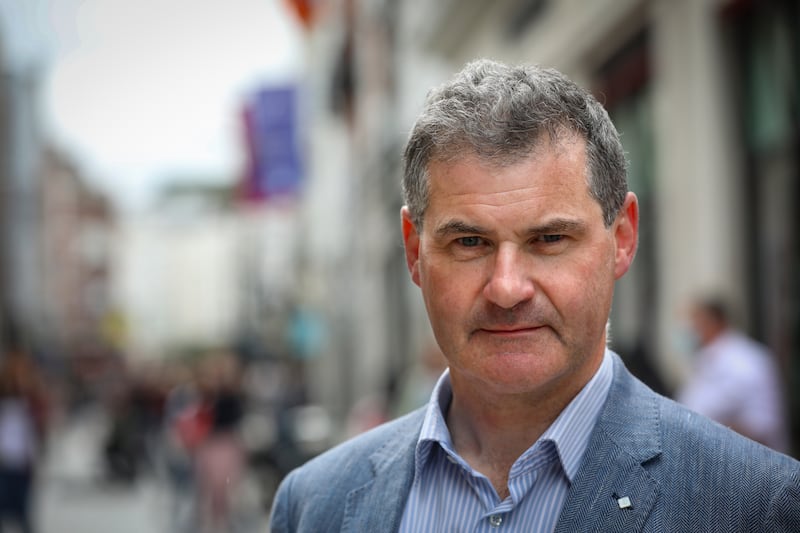When American visitor Stephen Termini (57) was beaten unconscious in the north inner city last week, it was against a backdrop of rising concern that Dublin city centre had become increasingly violent since the pandemic. From Buffalo, New York, he remains in intensive care in Beaumont Hospital after the attack on the corner of Talbot Street and Store Street in Dublin 1. His blood stains the pavement less than 100m from one of the busiest Garda stations in the country.
The attack prompted an outpouring of shock, anger and no shortage of embarrassment that a visitor should be met with such violence. Many took to social media to share their experiences of falling victim to crime in the city, while some politicians warned that parts of the city were at risk of becoming “no go” areas.
Official crime statistics, however, do not support the contention that violent crime has significantly increased. If anything, there is evidence to the contrary: gun crime has collapsed over the past five years, drug dealing has reduced and while assaults have increased nationally, most parts of Dublin – including the north inner city – bucked that trend.
So, where does the truth lie? Are crime figures failing to capture a descent into lawlessness in some parts of the capital? Or is the public outcry over a non-fatal assault – which would likely not make the news in many capital cities – disproportionate?
READ MORE
The traders: ‘They run in, they attack, they rob’
Grainger’s Pub, on the corner of Talbot Street and Amiens Street, has been in Alan Grainger’s family since the 1950s. He says he has “seen it all” on Talbot Street and is adamant the primary problem now is violent youth gangs on the streets. He says the Government and Garda have effectively allowed parts of Dublin to become lawless as long as prestige locations – such as Grafton Street, Stephen’s Green and others – are maintained.
He points out Dubliner Josh Dunne (16) and Mongolian woman Urantsetseg Tserendorj (48) were both killed in stabbing incidents following a street disturbance and a mugging in the neighbourhood during the pandemic. Those deaths, he says, sprang from a growing culture of crime and disorder perpetrated by gangs who became more comfortable and confident on deserted streets during the pandemic. Now, he says, they are seeking to hold on to that sense of ownership of the streets.
The boys in the gangs “bombard” local businesses, especially shops and food outlets, Grainger says. “They run in, they attack, they rob. They intimidate, they steal things like eggs and throw them at people, trying to incite you to have a go at them,” he says.

Marita Chillingworth is manager of Laine, My Love, a stylish cafe and bakery which serves speciality coffee. While there was a noticeable Garda foot patrol presence around when she started work there six years ago, she says this is no longer the case.
“Now, our tip jar gets robbed, the fridge gets raided, they’ll just help themselves,” she says. She believes the atmosphere worsened as more hotels became hostel accommodation due to the housing crisis.
Grainger’s view – that gangs of violent teenagers are a growing problem – is echoed by almost all of the traders on Talbot Street who spoke to The Irish Times this week.
Most did not want to speak on the record for fear of becoming targets; many reported a heavy racial component to the targeting of their businesses, with non-Irish staff singled out for abuse.
One owner says she has never seen the level of aggression from boys who come into her shop and steal what they want. She has to physically defend her business “maybe 15 times a day” from them and now makes sure all her women staff are rostered off by mid-afternoon. Another trader is also fearful, saying: “These kids are a different breed, they’d put a blade through you.”
The schoolteacher: ‘You want to get involved at eight to 10 years old. By 5th and 6th class, it’s almost too late’
Niamh Murray is principal at Rutland National School, off Seán McDermott Street Lower, in the heart of Dublin’s north inner city.
When she speaks of the area, and the 160 children in her care, she presents two worlds. One is an interested student group with engaged parents. The other is a “tiny”, difficult-to-reach cohort of young people, some of whom begin to display poor school attendance rates before they reach their 10th birthday.
For Murray, the first sign of erratic school attendance – which can often result in school dropout – is the time to intervene. That observation emerges at a time when new research reveals 70 per cent of those who end up in prison have left school by the age of 14.
“Education welfare officers are practically non-existent. Really, for some kids, you’d want to be getting involved at, say, eight to 10 years old because by 5th and 6th class, it’s almost too late” Murray says.

She also believes early intervention efforts can be “stymied” by data protection issues. For example, the teachers in her school are not told if one of their pupils is being dealt with under the Garda’s juvenile liaison system. Privacy rights mean the school is not entitled to know and gardaí are not entitled to tell. She contrasts that with the system in place many years ago when part of a Garda juvenile liaison officer’s job was to check if children they were dealing with were attending school.
Murray also notes recent figures which show about half of the child protection social worker posts in Dublin’s north city are vacant. “So, your social work system is not functioning in the area, which is the most deprived area in the State,” she says.
Murray says some of her staff “regularly” witness street drug dealing, including on the steps of the flat complexes where her young pupils live. “You are talking about teenagers openly drug dealing… and nobody seems to be doing too much about it,” she says.
Some gardaí say they do not want to criminalise young people by arresting and charging them with drug dealing, with which she agrees. “But there still needs to be a deterrent,” she says. “Do you maybe charge some of those teenagers and then if they aren’t in trouble again for a number of years, those charges can be wiped from their record? There needs to be some creative thinking. The whole idea of putting more gardaí on the streets… I think that’s more of an optical thing.”
The gardaí: ‘People might feel unsafe... but they are much safer than in other countries’
Assistant Garda Commissioner Angela Willis, who is in charge of policing in Dublin, this week acknowledged that the pandemic affected Garda recruitment. However, she says recruitment has resumed and numbers are set to increase. The first 48 new Garda members will be on the streets of north and south central Dublin in two weeks, with more to follow.
Willis also says an investigation is under way into the attack on Stephen Termini, with three teenage boys facing charges. Some 16 gardaí and three sergeants were policing the streets of the north inner city on the night of the attack, she adds
Other gardaí, speaking to The Irish Times on condition of anonymity, say frontline resources in Dublin have been under extreme pressure for several years. One cites a recent two-day operation aimed at arresting street drug dealers, saying more than 70 arrests were made. However, the volume of paperwork generated by the operation made it “completely unsustainable”. Another said gardaí were regularly drafted into Dublin from other parts of the country to “scrape together the numbers for a unit” to police the streets at weekends.
Another agreed, saying while there were plans to increase the Garda force to 15,000, “the number needs to be much bigger, a couple of thousand more”. Figures show numbers in the force have dropped from a record high of 14,750 in March 2020, to just below 14,000 at present. But gardaí say that drop reflects only part of the picture: as well as falling numbers, more and more of those working in frontline policing say they are being recruited into specialist bureaus such as online crime, sexual offences and economic crime.
A number of experienced gardaí say the concentration of drug treatment and homeless services needs to be examined. “You are just dumping the hardest cases into the city centre streets every day,” one says.
Other garda confess to being taken aback by the reaction to last week’s alleged attack, saying some street murders had not generated as much media coverage or political pressure.
“People might feel unsafe but in Ireland, even Dublin, they are much safer than [in] other countries. People don’t want to hear it, but that’s the reality,” says one inner city-based garda. “Gangs of young lads are doing a lot of damage in some areas and people are afraid of them. Over the past few years, that’s the big change, I think. But it’s only in pockets and it can be tackled.”
The local representative: ‘You need the old outreach workers... people used to working with hard-to-reach youth’
From the north inner city, and now a Social Democrats TD for Dublin Central, Gary Gannon says he is not surprised business owners on Talbot Street have identified groups of teenage boys as the main safety concern in the north inner city.
He is convinced the pandemic caused significant damage across the community. The relationships between youth services and young people was lost during the lockdown, he says, and not re-established since.
“These kids are really tough, that’s all they know. They’re so exposed to violence; on their phones or coming at them constantly as a marker of ‘what it takes to be a man in this world’. They get their street cred from using their fists and being able to take what they want, be that mugging someone, [stealing] the bicycle, getting into fights.”

He believes the first task that must be addressed in the inner city is to make the streets feel safer, saying gardaí have “lost control” of some streets. He also believes new “community wardens” set to patrol Dublin’s north inner city – to “observe and report” antisocial behaviour – have the potential to be a “disaster” because the scheme was to be run by business interests.
“You need the old outreach workers from the community projects; people used to working with hard-to-reach youths, and who are not afraid to go up to young people on the street ... If you had a community safety warden, then you have people who can go over to them and say, ‘Okay lads, what’s up, what are you doing hanging around here?’ It’s intervention through conversation; at an early stage and by people who understand.”
The business representative: ‘The chances of something random happening to you are very, very low’
Richard Guiney, chief executive of Dublin Town, a business representative group aimed at developing the city centre, says Talbot Street was once a traditional shopping street that had now lost its purpose and needs “reinvention”. In a Dublin Town public opinion poll about perceptions of safety in central Dublin, 50 per cent of respondents felt safe on Talbot Street during the day while only 10 per cent said they would feel safe there at night. This is “low” compared with other parts of the city centre.
Two weeks ago he attended a think-in in Manchester attended by delegates from organisations similar to Dublin Town based all over the world. They also reported a pronounced trend of lower perceptions of safety in their towns and cities since the pandemic, even when there was not a “correlated increase in crime”. Dublin Town, he says, is working with Dublin City Council to identify places where enhanced lighting is required, as well as redoubling efforts around street cleaning.

However, Guiney also says it is time to examine the high concentration of accommodation and facilities for vulnerable people in pockets of the inner city. He rejects any suggestion that central Dublin, or even parts of it, are “no-go areas”. While there were crimes of particular concern, for a city as big and busy as Dublin they are rare and “not even weekly”.
“When you weigh it all up, the chances of something random happening to you are very, very low. When we are talking to our international colleagues [it is clear] that we don’t have the kind of gun crime, the level of knife crime they would have in their cities.”



















